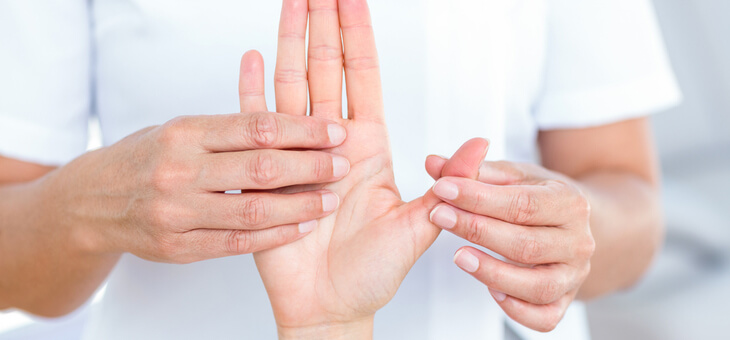You can learn a lot about someone just by looking at their fingers. Broken and dirty nails might indicate a person who spends a lot of time in the garden. (Or in my case, someone who simply doesn’t look after their hands.)
Medical researchers can tell much more than that, it seems. A simple comparison of your ring finger with your index finger might be an indicator of your risk of contracting COVID.
How can that be? I must admit, I wondered the same thing. It turns out that it’s all related to hormones. Scientists have apparently known for a long time that a longer ring finger is an indicator of higher prenatal levels of testosterone.
Conversely, a longer index finger is a marker of higher levels of oestrogen. This is why, as a general rule, males have longer ring fingers, while females have longer index fingers.
Read: Fears COVID will accelerate Parkinson’s epidemic
But what does this have to do with COVID?
Well, researchers at Swansea University have been busy examining the link between levels of sex hormones in the womb and in puberty, and COVID hospitalisations. This may sound like a pretty scattergun approach to determining COVID indicators, but there is some solid science behind it.
Professor John Manning, of Swansea’s Applied Sports Technology, Exercise and Medicine (A-STEM) research team, has been working in conjunction with colleagues from the Medical University of Lodz in Poland and Sweden’s Karolinska University Hospital to look more closely at ‘digit ratios’ as predictors of severity of COVID symptoms.
Read: Those more likely to suffer from long COVID
Digit ratios are a measure of the ratios of your hand’s second (2D), third (3D), fourth (4D) and fifth (5D) digits (your thumb being the first digit). Prof. Manning and his colleagues observed that patients with ‘feminised’ short little fingers relative to their other digits tend to experience severe COVID symptoms leading to hospitalisation, and more importantly patients with large right hand-left hand differences in ratios 2D:4D and 3D:5D have substantially elevated probabilities of hospitalisation.
In presenting their preliminary findings, published in Nature, the team found that COVID severity is related to low testosterone levels, and possibly also to high oestrogen levels in both men and women.
Does this mean you should check the lengths of your fingers and panic if your ring finger is shorter than your index finger? Definitely not. But the research could be useful in helping to prevent serious cases of COVID, according to Prof. Manning.
Read: When is COVID most contagious? How long until you’re positive?
“This is significant because if it is possible to identify more precisely who is likely to be prone to severe COVID, this would help in targeting vaccination. Right-left differences in digit ratios (particularly 2D:4D and 3D:5D) may help in this regard.”
The research might also explain why elderly males have an elevated risk of hospitalisation. “‘Feminised’ differences in digit ratios in hospitalised patients supports the view that individuals who have experienced low testosterone and/or high oestrogen are prone to severe expression of COVID-19,” says Prof. Manning.
Ultimately, the aim is to save lives and reduce the risk of severity for those who contract COVID. Prof. Manning says adding to the understanding of the links “may bring us closer to improving the repertoire of antiviral drugs, helping to shorten hospital stays and reduce mortality rates.”
If you enjoy our content, don’t keep it to yourself. Share our free eNews with your friends and encourage them to sign up.

